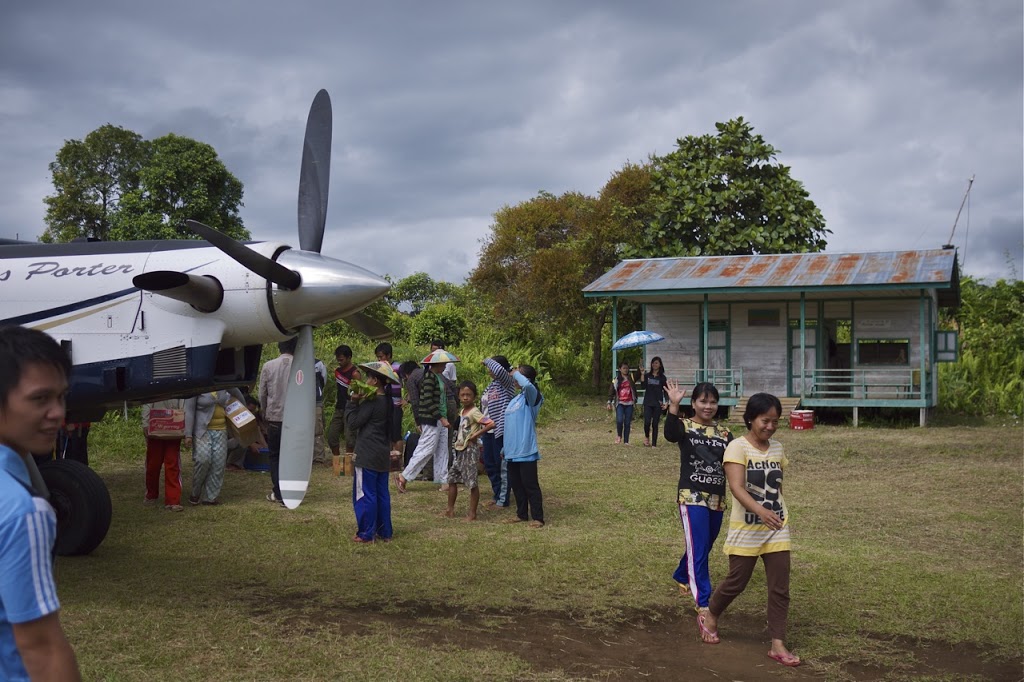Length: 430m
Runway: 03/21
Elevation: 1950ft
Slope: 3 degrees up (landing runway 21)
Now we’re into proper Porter territory with this one, although still plenty long enough. The up-slope really helps slow you down and even fully loaded you’ll tend to use less than half that distance on landing. Long Sule is set on the edge of a hillside at the end of a valley, so you’re below terrain when making the approach and climb-out which always looks pretty dramatic; especially if there’s clouds sitting on the tops.
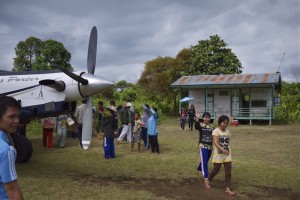 |
| Passengers disembarking at Long Sule |
The condition of the strip is not too bad really and is of the typical clay/grass construction. It’s got a bit of a camber which can pull you off the centreline if you’re not busy enough with the pedals and it’s pretty bumpy in places but at least it drains nicely after rainfall, so you don’t get huge ruts or anything.
Landing
It’s not uncommon to arrive at Long Sule and find a layer of clouds covering the whole area. When this is the case, I prefer to fly overhead the the strip and get visual with it before committing to a descent below the clouds into the valley. Once a suitable hole is found, a descent can be initiated into the valley to setup for the approach onto 21. You cannot land the other way as that would require landing downhill which is not the done thing. If the valley’s open (no clouds) then it’s pretty straight forward to have a nice, gradual descent all the way into the valley and onto final approach for 21.
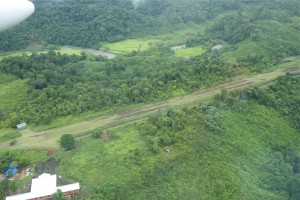 |
| View from overhead Long Sule |
If you do need to go-around, then a right turn about 1/2 mile before the strip into the valley is the best option and leaves enough room for a climb back round to try again. After that, you really should be landing.
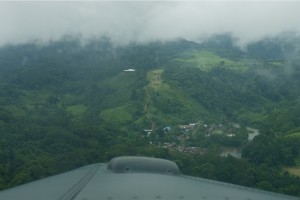 |
| Final approach 21 at Long Sule |
Landing on an up-slope tends to require leaving the power in a little later than you’d otherwise do on a flat runway. This helps pull the aircraft up the slope during the flare and helps cushion the touchdown. As soon as you’re pointing uphill you can safely cut the power and be ready to engage reverse once the wheels have made contact with the ground. The attitude can take a little to get used to, although 3 degrees isn’t too dramatic.
One thing you do want to do is keep rolling, so once slowed to a suitable speed, disengage the tailwheel lock and add a bit of power to help you taxi up to the top of the strip and turn around ready for departure. There’s no apron here, so I just stop in-front of where-ever the most people are gathering.
Take-off
At least you don’t have to decide which way to depart. You have to take-off downhill. With just over 400m and a down slope you don’t need to use a maximum performance take-off but due to the bumpiness of the strip, I prefer to. Doing so allows me to get the power set before rolling and then not have to look inside the cockpit too much once on the roll.
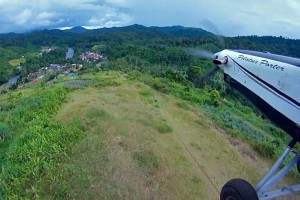 |
| Go-Pro screen grab, departing Long Sule |
The climb-out is basically along the valley until you have enough height to clear the terrain at the sides to make your way back to Malianu. This also gives you more time to decide where to go should the worst happen and you find yourself in a glider. There’s some rice fields off to the left of the river which I would favour.
Everything written in this article are opinions of the author and should not be taken as sole reference for attempting a flight into or out of the aforementioned airstrip.
Discover more from Matt Dearden
Subscribe to get the latest posts sent to your email.
